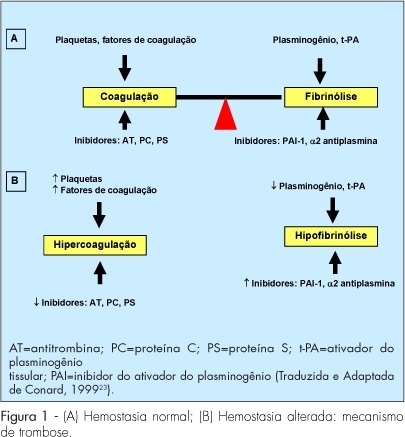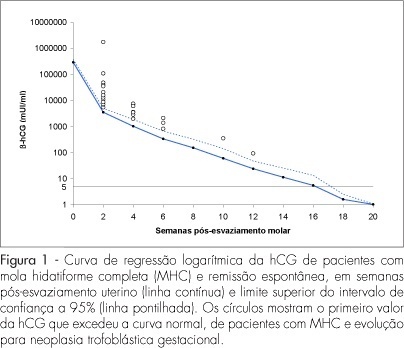Summary
Revista Brasileira de Ginecologia e Obstetrícia. 2007;29(11):555-560
DOI 10.1590/S0100-72032007001100002
PURPOSE: to identify the factors related to successful gestational diabetes mellitus (GDM) management with glyburide and to evaluate perinatal outcomes. METHODS: prospective longitudinal study including 50 pregnant women with GDM who required complementary treatment to diet and physical activity, whose fetus presented normal abdominal circumference (AC) to ultrasound (pct<75). Study period was August 2005 to July 2006. Ultrasonography was carried out monthly. Glyburide was used until delivery, as long as glucose control was obtained and fetal AC was normal, being thus considered therapeutically successful. In case there was no glucose control or alteration in AC, management was switched to insulin therapy, being thus considered therapeutically unsuccessful. Pregnant women were divided into two groups: one therapeutically successful (n=29) and another therapeutically unsuccessful (n=21). The results evaluated were: therapeutic success, maternal characteristics and perinatal outcome. RESULTS: fifty-eight percent of the cases were successfully managed with glyburide. No difference was found (p>0.05) in either group, with regards to maternal age, glucose values at OGTT75g, maternal body mass index (BMI), number of pre-natal consultations, number of previous pregnancies. According to the logistic model of regression used, therapeutically successful pregnant patients had had a later diagnosis (p=0.02) and lower weight gain during gestation (p<0.01). Perinatal outcome did not differ in either group. CONCLUSIONS: patients with later diagnosis and lower weight gain are more likely to have successful GDM management with glyburide. Unsuccessful management with glyburide did not alter the perinatal outcome.
Summary
Revista Brasileira de Ginecologia e Obstetrícia. 2007;29(10):538-547
DOI 10.1590/S0100-72032007001000008
Exogenous female hormones used for contraception or postmenopausal hormonal replacement therapy are associated with an increase of venous thromboembolism (VTE) risk, mainly because they cause a hypercoagulable state. The risk is highest during the first year of use and it is not cumulative. The dose of estrogen, the type of estrogen and progestogen, the route of administration of female sex steroid hormones, and the hereditary risk factors for VTE of each patient can interfere on the final risk for VTE. The knowledge of their effect on hemostasis is essential for a correct prescription.

Summary
Revista Brasileira de Ginecologia e Obstetrícia. 2007;29(10):525-531
DOI 10.1590/S0100-72032007001000006
PURPOSE: to evaluate changes in mammographic breast density in postmenopausal women using raloxifene. METHODS: in this clinical trial, 80 women (mean age=61.1 years) were studied prospectively. Forty patients received 60 mg/day raloxifene, and 40 women comprised the non-treated group (control), paired by age and time of menopause. The treated group was composed of patients with osteoporosis of the lumbar spine. Those with history of breast surgery and users of hormone therapy up to six months prior to the study were excluded. The breast density was assessed qualitatively (subjective) and quantitatively (objective) in two moments, initial and final, after a 6-month follow-up. The 320 mammograms (craniocaudal and oblique) were interpreted qualitatively by the Breast Imaging Reporting and Data System (BI-RADS) classification and quantitatively by digital scanning and computer-assisted segmentation. For statistical analysis t-test, Wilcoxon Mann-Whitney, Spearman correlation and the kappa index were used. RESULTS: on the initial statistical comparison, the groups were considered homogenous for the variables: analyzed age, time of menopause, parity, breast feeding, previous hormonal therapy and body mass index. Baseline breast density, by qualitative and quantitative methods, correlated negatively with the age in both groups (p<0.05). Concerning the other variables, there was no correlation. After six months, no alteration was observed in the mammographic breast density in 38 women of raloxifene group and 38 of the control group, by qualitative method. However, by quantitative method, no alteration was observed in 30 women of the raloxifene group and 27 controls (p>0.05). It was observed a weak agreement rate (kappa=0.25) between the BI-RADS classification and digital scanning/computer-assisted segmentation. CONCLUSIONS: in post-menopausal women with osteoporosis, submitted to raloxifene treatment for six months, no alterations were observed on the mammographic breast density.
Summary
Revista Brasileira de Ginecologia e Obstetrícia. 2007;29(10):511-518
DOI 10.1590/S0100-72032007001000004
PURPOSE: to analyze the association between maternal pre-gestational nutritional status and maternal outcomes - hypertensive disorders of pregnancy, gestational diabetes, vitamin A deficiency, and anemia - and the newborn outcome - low birth weight. METHODS: cross-sectional study, with 433 adult puerperal women (> 20 years old) and their newborns, attending the Maternidade Escola of Universidade Federal do Rio de Janeiro (UFRJ). Data was collected through interviews and access to their medical records. Maternal pre-gestational nutritional status was established through pre-gestational body mass index according to the cut-offs for adult women defined by the World Health Organization (WHO), in 1995. The association between gestational outcomes and pre-gestational nutritional status was estimated through odds ratio (OR) and a 95% confidence interval (95%CI). RESULTS: frequency of pre-gestational weight deviation (low weight, overweight and obesity) was 31.6%. Considering the pre-gestational nutritional status, overweight and obese women presented a lower weight gain than eutrophic and low-weight women (p<0.05). Women with pre-gestational obesity presented a higher risk of developing hypertensive disordens of pregnancy (OR=6.3; 95%CI=1.9-20.5) and those with low pre-gestational weight were more likely to give birth to low birth weigh infants (OR=7.1; 95%CI=1.9-27.5). There was no evidence of the association between pre-gestational nutritional status and the development of anemia, vitamin A deficiency and gestational diabetes. The mean weight gain among overweight and obese pregnant women was significantly lower when compared to eutrophic and low-weight pregnant women (p=0.002, p=0.049, p=0.002, p=0.009). CONCLUSIONS: the high number of women with pre-gestational weight deviation reinforces the importance of a nutritional guidance that favors a good nutritional state and reduces the risks of maternal and newborn adverse outcomes.
Summary
Revista Brasileira de Ginecologia e Obstetrícia. 2007;29(10):532-537
DOI 10.1590/S0100-72032007001000007
PURPOSE: to determine the effects of soy-derived isoflavone on hot flashes, menopausal symptoms, and endometrial thickness in postmenopausal women. METHODS: this double-blind, placebo-controlled, randomized study involved 90 postmenopausal patients aged 45-60 years old attended at the Outpatient Menopause Clinic. All patients had been experiencing hot flashes accompanied or not by other hypo-estrogenic symptoms. Patients were randomized to receive either two soy capsules containing 50 mg of soy-derived isoflavone or two identical placebo capsules, twice a day for 12 weeks in a double-blind fashion. Each patient was observed for 12 weeks, with two evaluations being made, one at baseline and the other at the end of the study. At each time point, the patients were given a diary to record the severity of the climacteric symptoms experienced, assessed with a modified Kupperman index, using a 100 mm Visual Analogue Scale (VAS). The intensity of hot flashes was also assessed separately. The patients were also submitted to a transvaginal echography for the measurement of endometrial thickness. Yates chi2, ANOVA or t de Student and Mann-Whitney were used for statistical analysis. RESULTS: no significant difference was detected in the Kupperman index (64 versus 82, p>0,05) or in the hot flashes (20 versus 20, p>0,05) between the isoflavone and placebo groups. No significant difference was either detected concerning the Kupperman index and hot flashes before and after treatment, when the two groups were analyzed separately. No difference was detected in the endometrial thickness either in the isoflavone or the placebo group (0.28 versus 0.26 mm, respectively, p>0.05). CONCLUSIONS: our results indicate that 100 mg of isoflavone are not more effective than placebo in reducing hot flashes and hypo-estrogenic symptoms in postmenopausal women and present no effect on the endometrium thickness.
Summary
Revista Brasileira de Ginecologia e Obstetrícia. 2007;29(10):519-524
DOI 10.1590/S0100-72032007001000005
PURPOSE: to identify the impact of pelvic reconstructive surgery on female sexual function, as well as the changes in vaginal anatomy, and to detect possible correlations between them. METHODS: a prospective, descriptive study, including 43 sexually active women with genital dystopy, undergoing surgery for pelvic organ prolapse, conducted between October 2004 and September 2006. The women completed the same multiple-choice questionnaire regarding sexual function, and analogic scales to quantify the degree of desire, arousal and satisfaction, and were clinically assessed using the pelvic organ prolapse quantification (POP-Q) staging system, before the surgery and three and six months after it. Statistical analysis was performed through the Bowker test for symmetry, Wilcoxon test, Student t test, chi2 and analysis of variance (ANOVA) as appropriate, with statistical significance set at 5% (p<0.05). RESULTS: all 43 women completed the follow-up at three and six months after the surgery, but two of them lost their partners after the surgery. Quality of sexual life improved significantly (p=0.03). Symptoms such as dyspareunia (25.6% before versus 17.1% after surgery), discomfort (27.9 versus 0%), embarrassment (20.9% versus 0%) and fear (2.3% versus 0%) significantly improved (p<0.001). Analogical scales scores regarding desire (5 versus 7, p=0.001), arousal (6 versus 8, p<0.001) and satisfaction with sexual life (5 versus 7, p<0.001) also improved. There was a statistically significant improvement (p<0.001) of the POP-Q stages after the surgery. However, there was no statistically significant correlation between changes in vaginal dimensions and changes in sexual function. CONCLUSIONS: after pelvic reconstructive surgery, there was a significant improvement in the quality of sexual life and of the POP-Q stages. However, there was no correlation between them.
Summary
Revista Brasileira de Ginecologia e Obstetrícia. 2007;29(10):506-510
DOI 10.1590/S0100-72032007001000003
PURPOSE: to evaluate the usefulness of the normal human chorionic gonadotropin (hCG) regression curve in the early diagnosis of post-molar trophoblastic neoplasia (GTN). METHODS: a longitudinal study including 105 patients with complete hydatidiform mole (CHM) followed up at the Botucatu Center of Trophoblastic Diseases from 1998 to 2005. Serial serum hCG titers were measured fortnightly in all patients. Individual curves of the 105 patients were built. Comparison between the normal regression curve established at our center with individual hCG curves was used to screen and diagnose (plateau/rise) GTN. The number of weeks postevacuation when hCG levels exceeded the normal limits was compared with the number of weeks when hCG reached plateau/rise. RESULTS: among the 105 patients with CHM, 80 reached spontaneous remission (SR) and 25 developed GTN. Among the 80 SR patients, 7 (8.7%) initially showed hCG concentrations above normal but eventually achieved remission. All the 25 GTN patients showed deviation from the normal hCG curve at 3.84±2.57 weeks and reached plateau or rise at 8.40±2.94 weeks (p<0.001). CONCLUSIONS: the normal regression curve of post-molar hCG is useful in the early diagnosis of GTN.
